WE have now spoken about the sterility of mules, and about those animals which are viviparous both externally and within themselves.
The generation of the oviparous sanguinea is to a certain extent similar to that of the animals that walk, and all may be embraced in the same general statement; but in other respects there are differences in them both as compared with each other and with those that walk.All alike are generated from sexual union, the male emitting semen into the female.But among the ovipara (1) birds produce a perfect hard-shelled egg, unless it be injured by disease, and the eggs of birds are all two-coloured.(2) The cartilaginous fishes, as has been often said already, are oviparous internally but produce the young alive, the egg changing previously from one part of the uterus to another; and their egg is soft-shelled and of one colour.One of this class alone does not produce the young from the egg within itself, the so-called 'frog'; the reason of which must be stated later.(3) All other oviparous fishes produce an egg of one colour, but this is imperfect, for its growth is completed outside the mother's body by the same cause as are those eggs which are perfected within.
Concerning the uterus of these classes of animals, what differences there are among them and for what reasons, has been stated previously.For in some of the viviparous creatures it is high up near the hypozoma, in others low down by the pudenda; the former in the cartilaginous fishes, the latter in animals both internally and externally viviparous, such as man and horse and the rest; in the ovipara it is sometimes low, as in the oviparous fish, and sometimes high, as in birds.
Some embryos are formed in birds spontaneously, which are called wind-eggs and 'zephyria' by some; these occur in birds which are not given to flight nor rapine but which produce many young, for these birds have much residual matter, whereas in the birds of prey all such secretion is diverted to the wings and wing-feathers, while the body is small and dry and hot.(The secretion corresponding in hen-birds to catamenia, and the semen of the cock, are residues.) Since then both the wings and the semen are made from residual matter, nature cannot afford to spend much upon both.And for this same reason the birds of prey are neither given to treading much nor to laying many eggs, as are the heavy birds and those flying birds whose bodies are bulky, as the pigeon and so forth.For such residual matter is secreted largely in the heavy birds not given to flying, such as fowls, partridges, and so on, wherefore their males tread often and their females produce much material.Of such birds some lay many eggs at a time and some lay often; for instance, the fowl, the partridge, and the Libyan ostrich lay many eggs, while the pigeon family do not lay many but lay often.For these are between the birds of prey and the heavy ones; they are flyers like the former, but have bulky bodies like the latter; hence, because they are flyers and the residue is diverted that.way, they lay few eggs, but they lay often because of their having bulky bodies and their stomachs being hot and very active in concoction, and because moreover they can easily procure their food, whereas the birds of prey do so with difficulty.
Small birds also tread often and are very fertile, as are sometimes small plants, for what causes bodily growth in others turn in them to a seminal residuum.Hence the Adrianic fowls lay most eggs, for because of the smallness of their bodies the nutriment is used up in producing young.And other birds are more fertile than game-fowl, for their bodies are more fluid and bulkier, whereas those of game-fowl are leaner and drier, since a passionate spirit is found rather in such bodies as the latter.Moreover the thinness and weakness of the legs contribute to making the former class of birds naturally inclined to tread and to be fertile, as we find also in the human species; for the nourishment which otherwise goes to the legs is turned in such into a seminal secretion, what Nature takes from the one place being added at the other.Birds of prey, on the contrary, have a strong walk and their legs are thick owing to their habits, so that for all these reasons they neither tread nor lay much.
The kestrel is the most fertile; for this is nearly the only bird of prey which drinks, and its moisture, both innate and acquired, along with its heat is favourable to generative products.Even this bird does not lay very many eggs, but four at the outside.
The cuckoo, though not a bird of prey, lays few eggs, because it is of a cold nature, as is shown by the cowardice of the bird, whereas a generative animal should be hot and moist.That it is cowardly is plain, for it is pursued by all the birds and lays eggs in the nests of others.
The pigeon family are in the habit of laying two for the most part, for they neither lay one (no bird does except the cuckoo, and even that sometimes lays two) nor yet many, but they frequently produce two, or three at the most generally two, for this number lies between one and many.
It is plain from the facts that with the birds that lay many eggs the nutriment is diverted to the semen.For most trees, if they bear too much fruit, wither away after the crop when nutriment is not reserved for themselves, and this seems to be what happens to annuals, as leguminous plants, corn, and the like.For they consume all their nutriment to make seed, their kind being prolific.And some fowls after laying too much, so as even to lay two eggs in a day, have died after this.For both the birds the plants become exhausted, and this condition is an excess of secretion of residual matter.A similar condition is the cause of the later sterility of the lioness, for at the first birth she produces five or six, then in the next year four, and again three cubs, then the next number down to one, then none at all, showing that the residue is being used up and the generative secretion is failing along with the advance of years.















